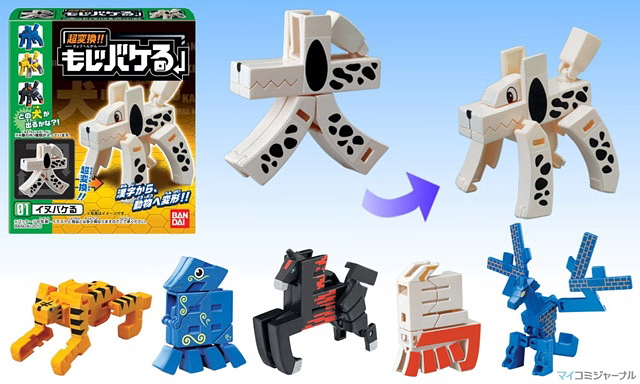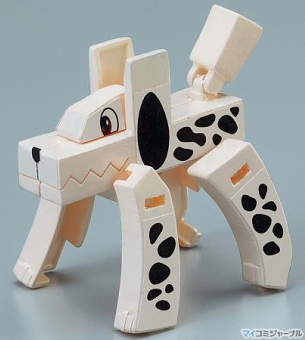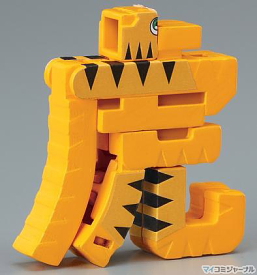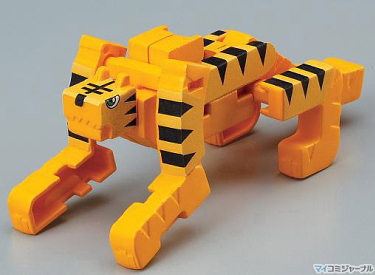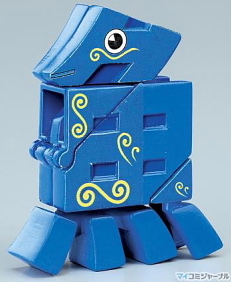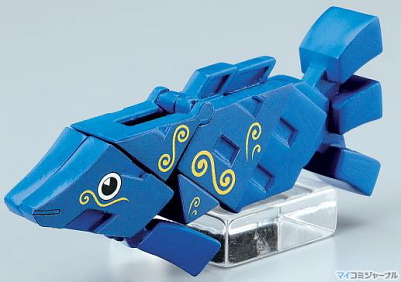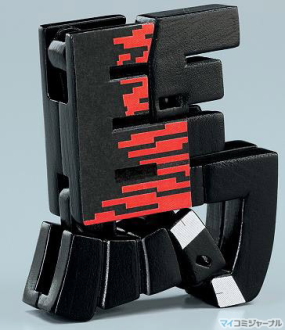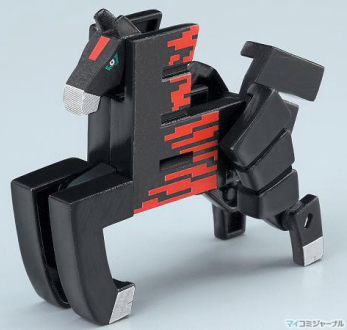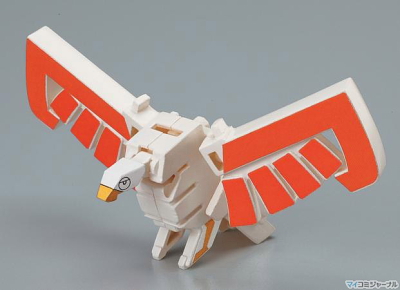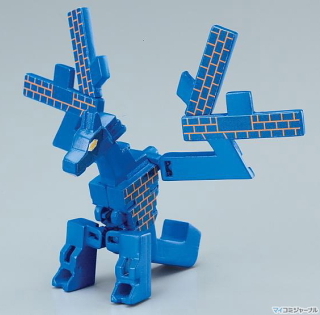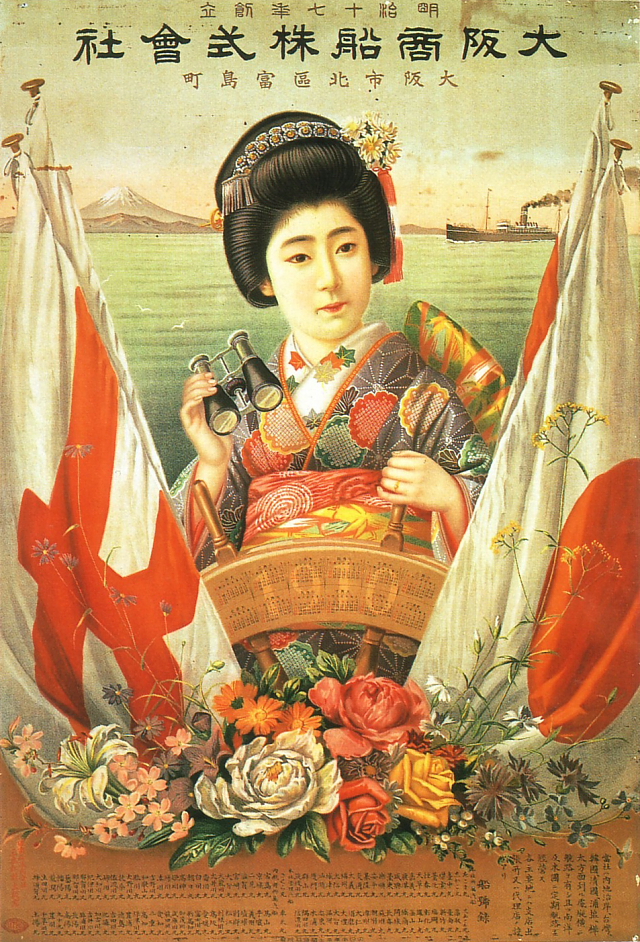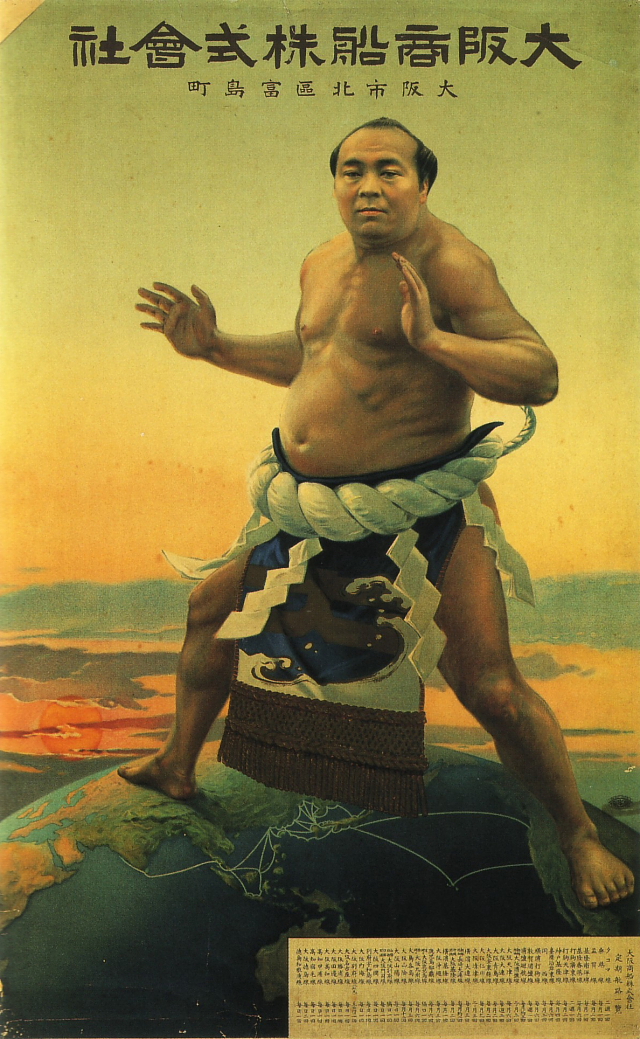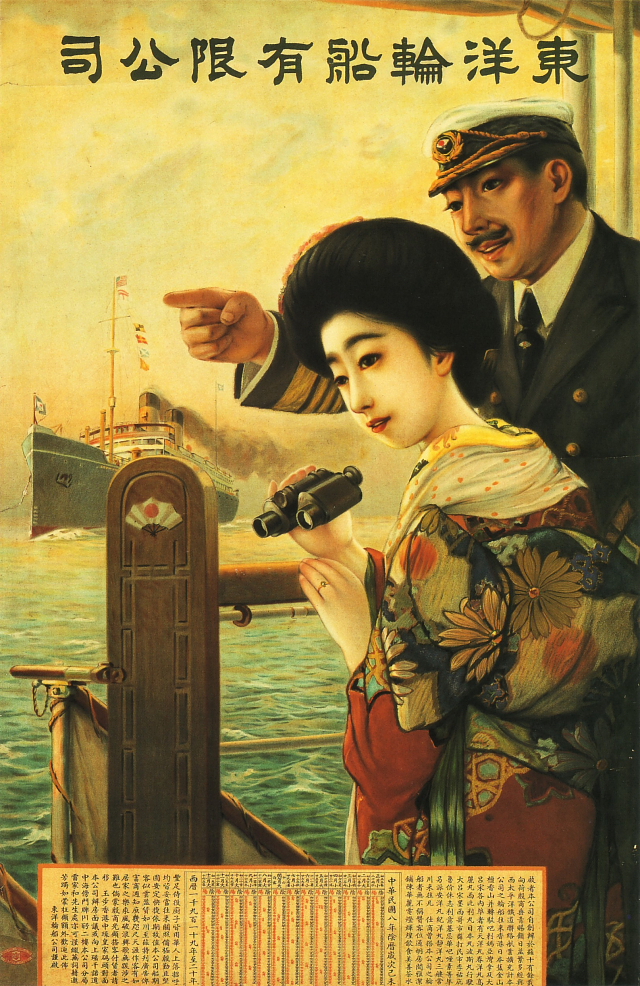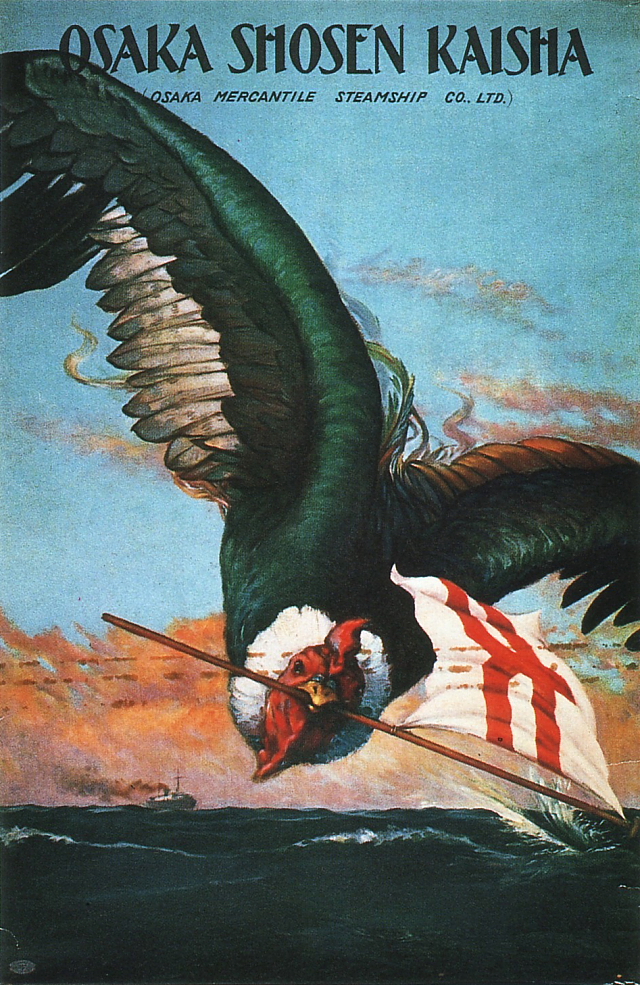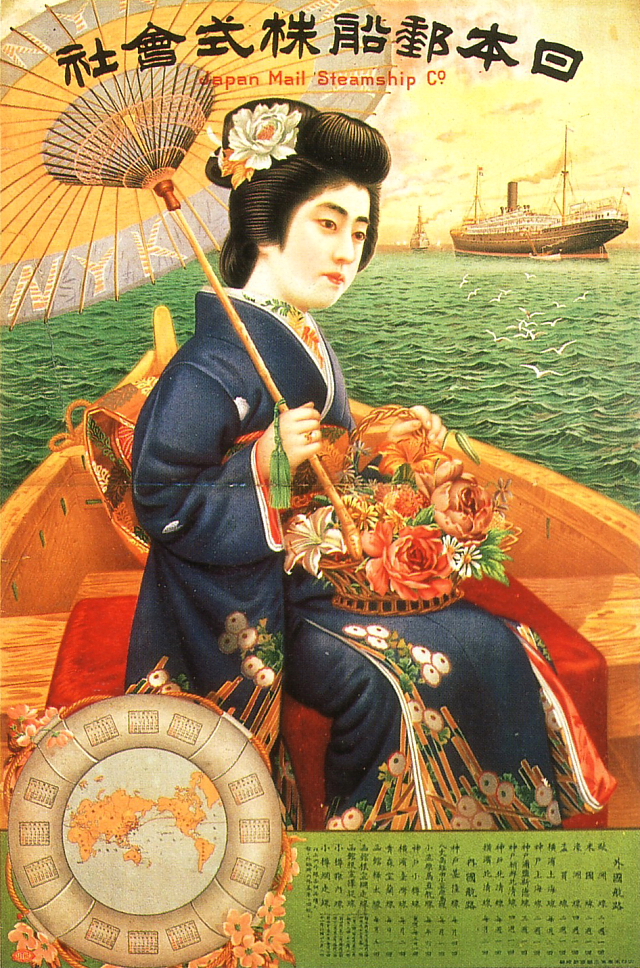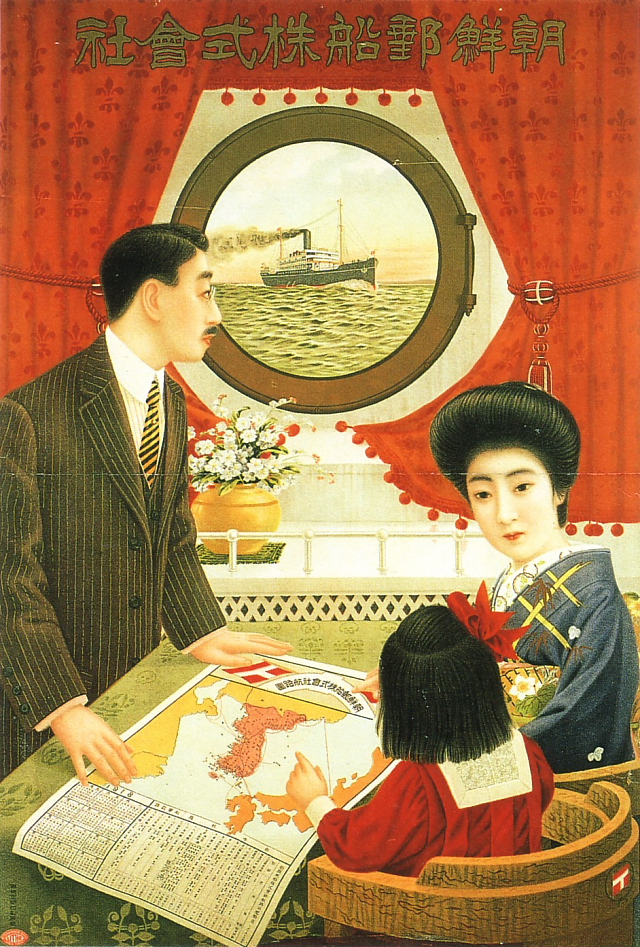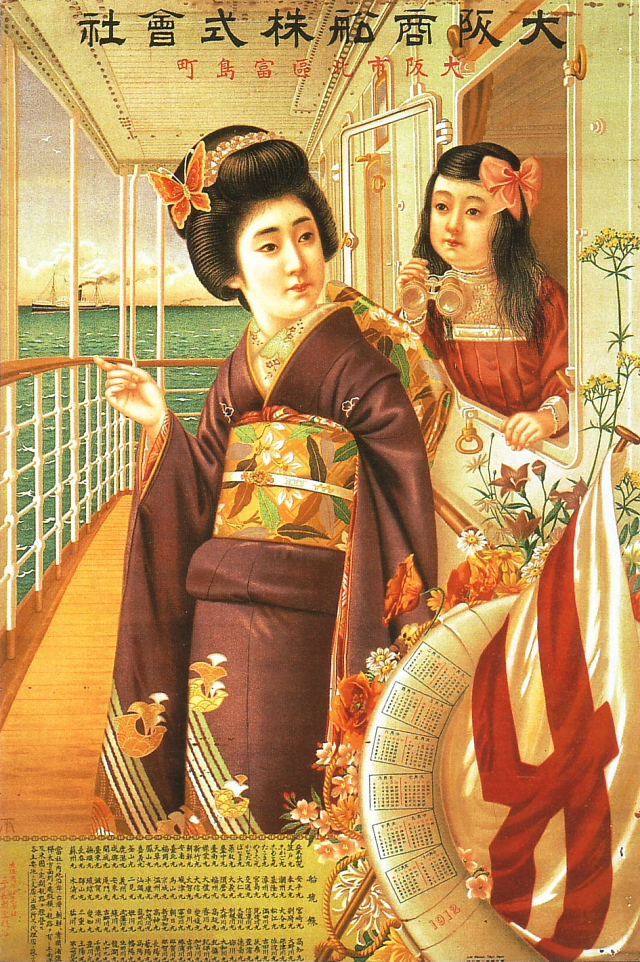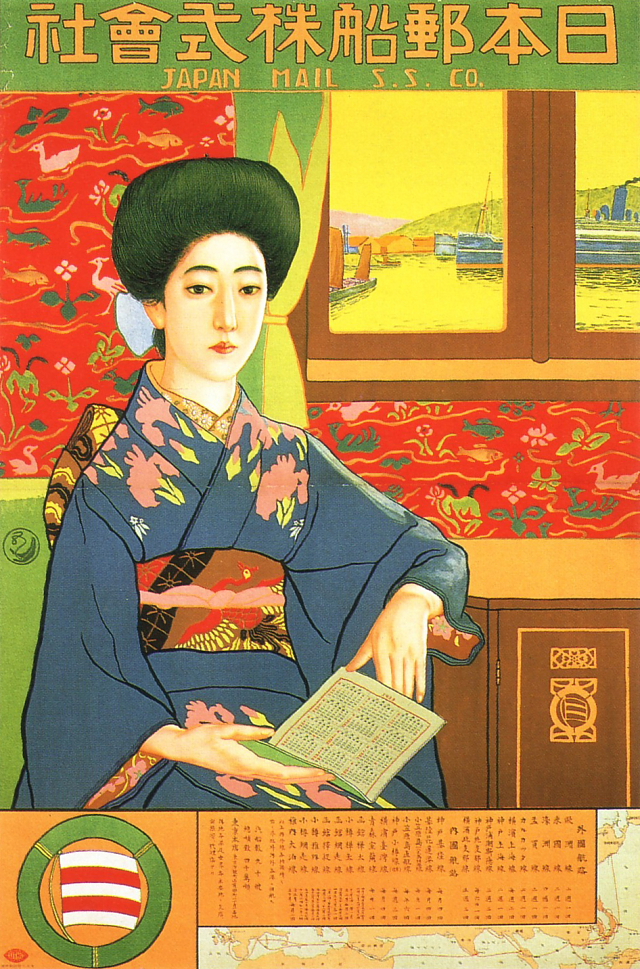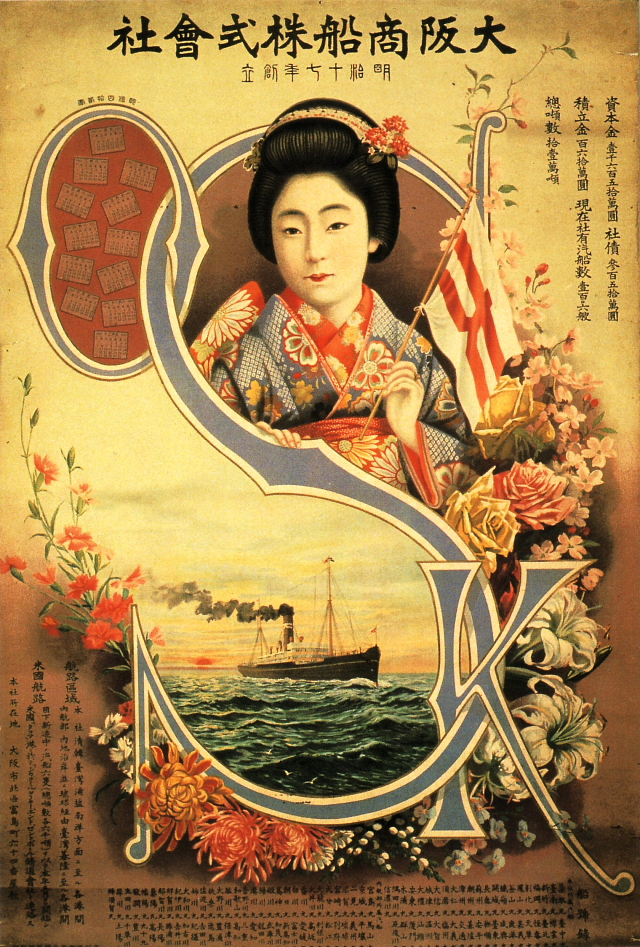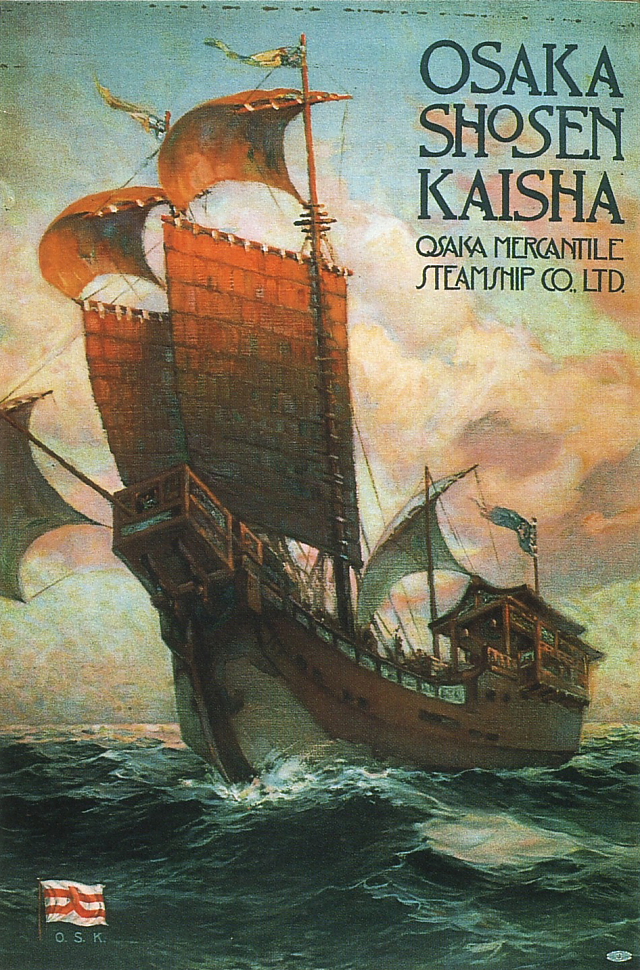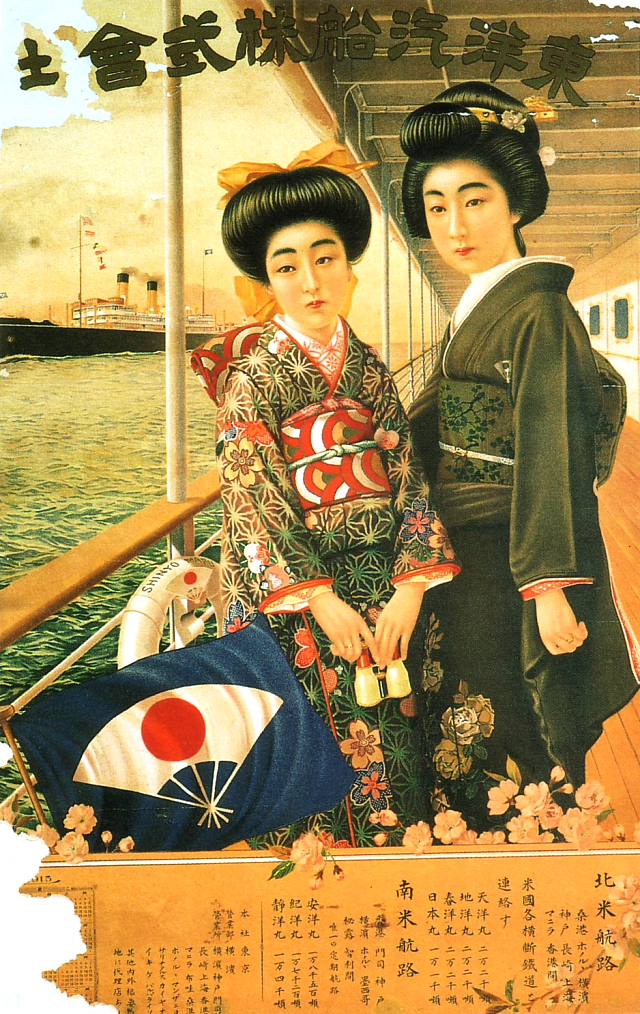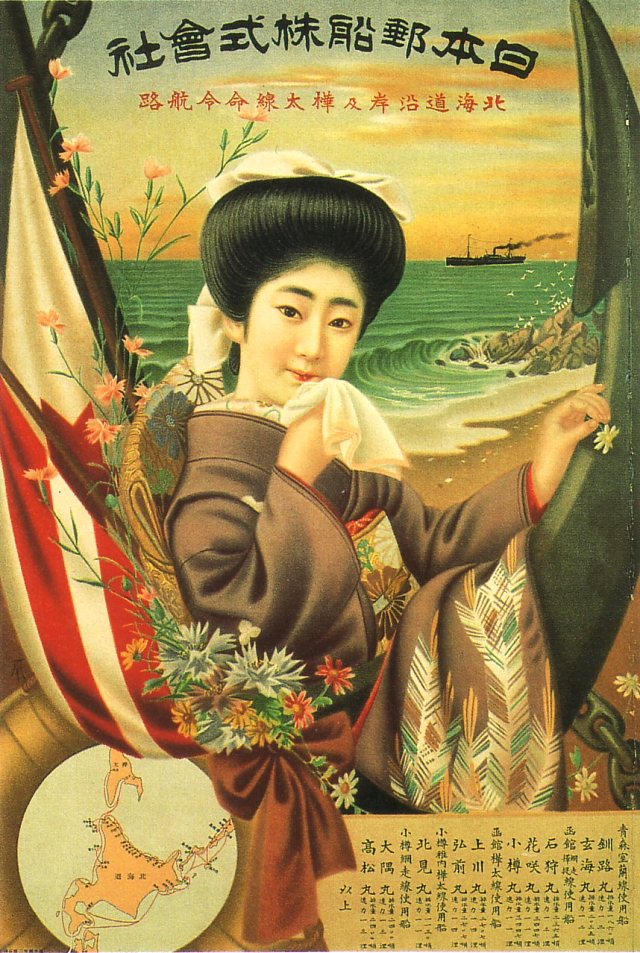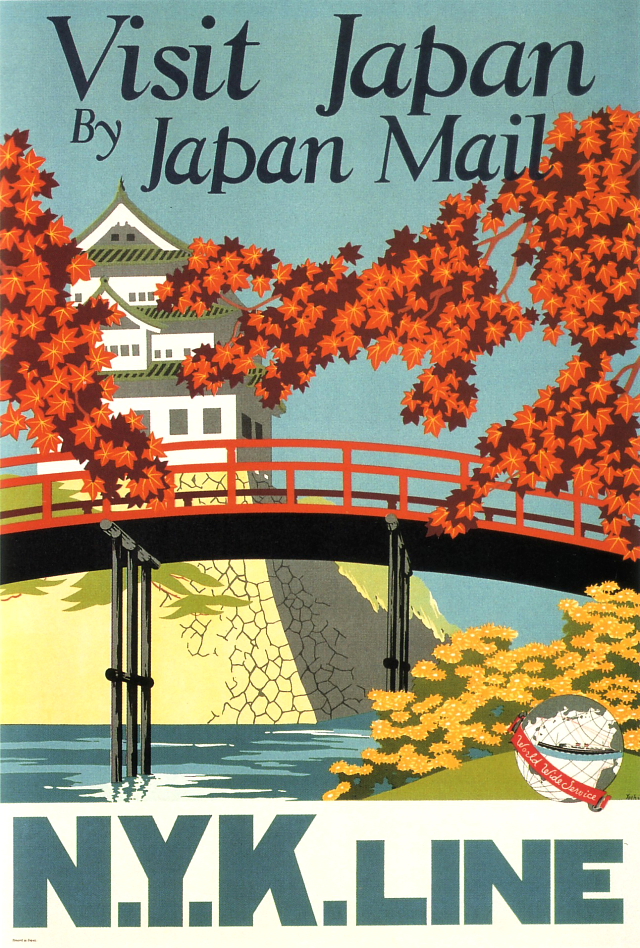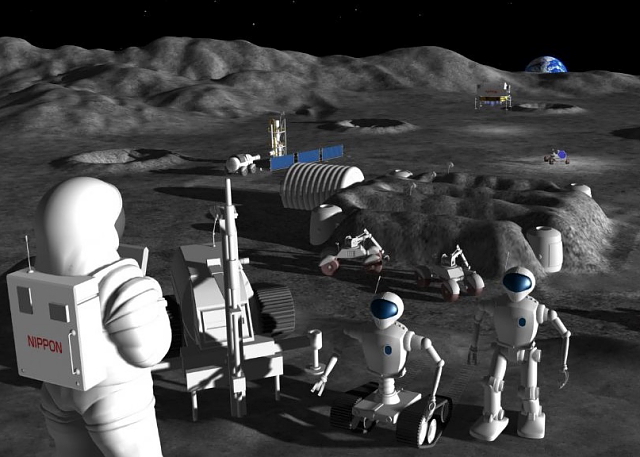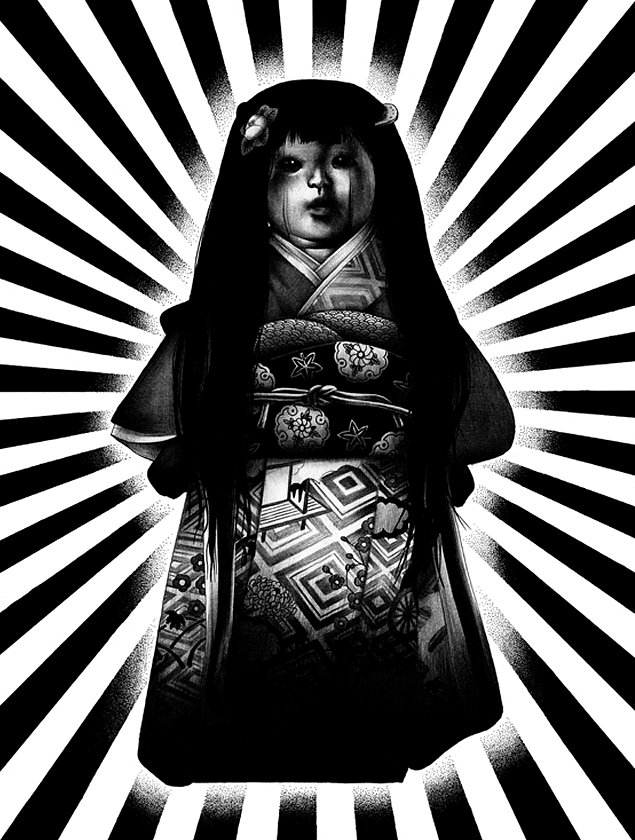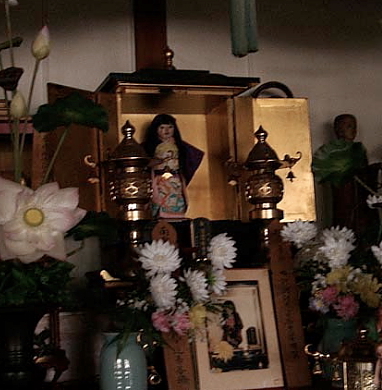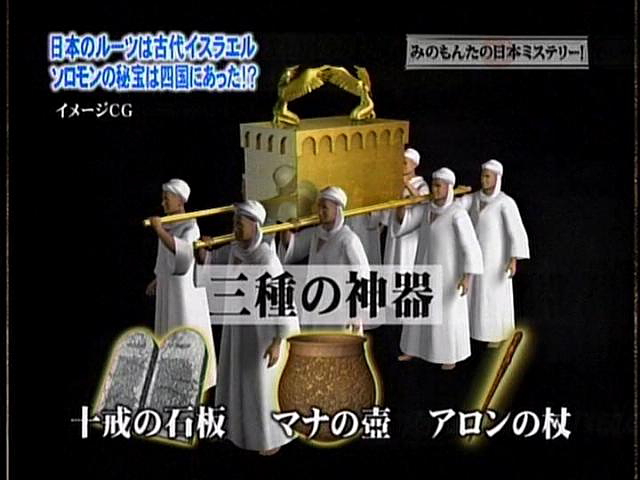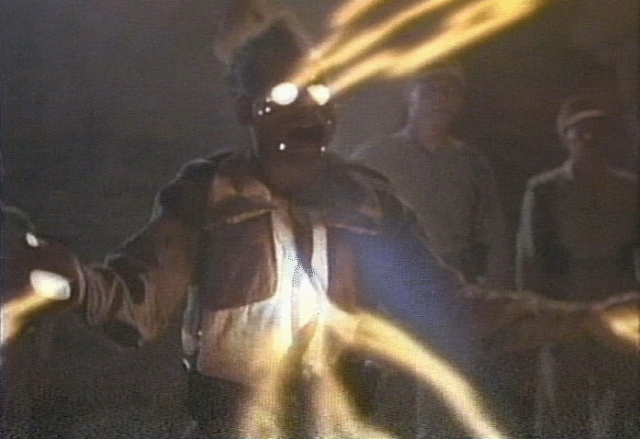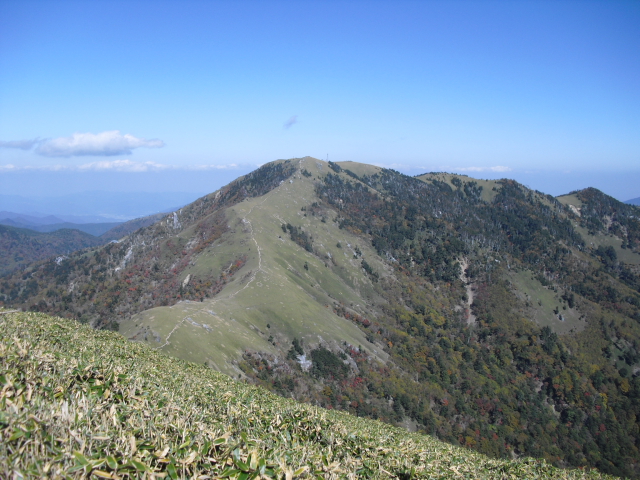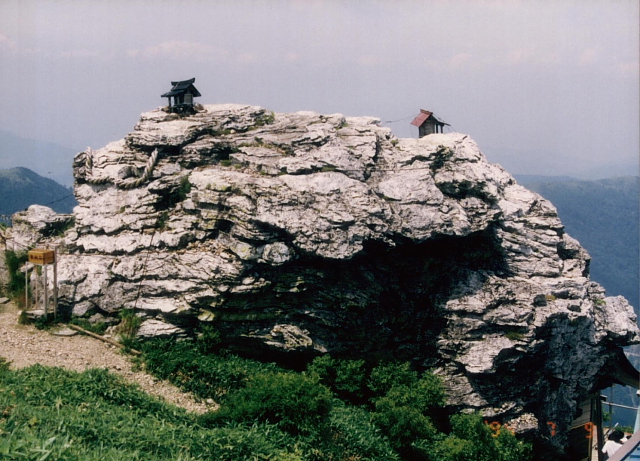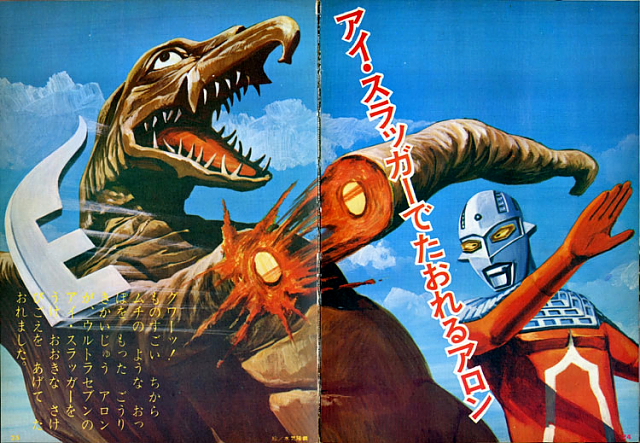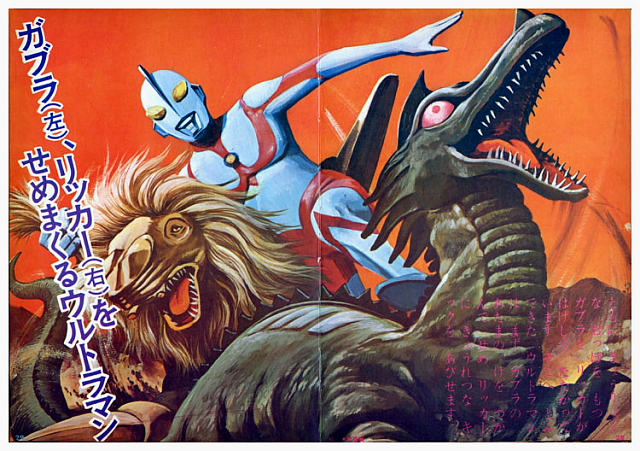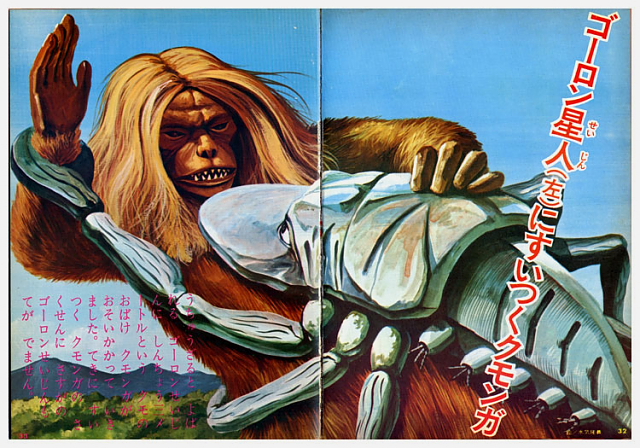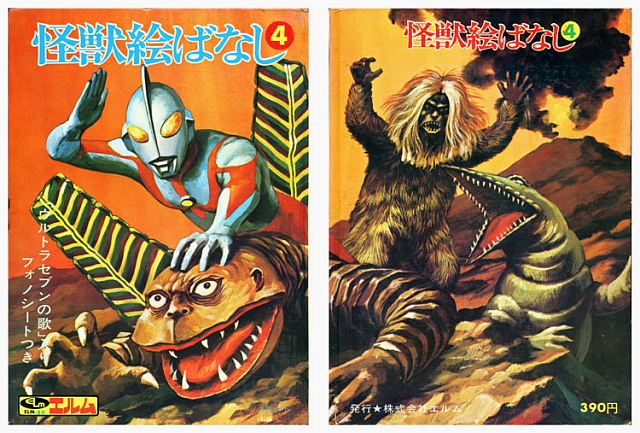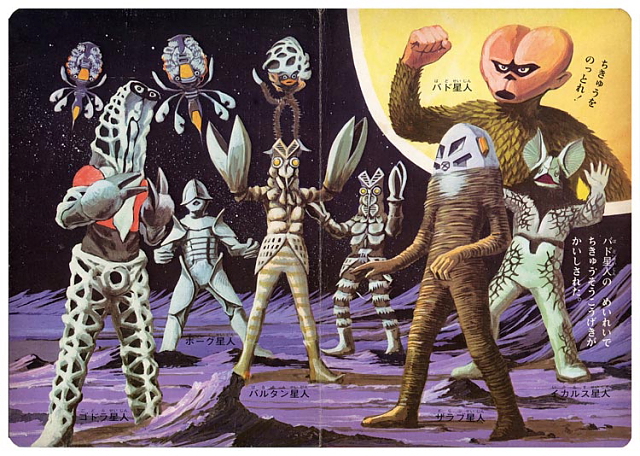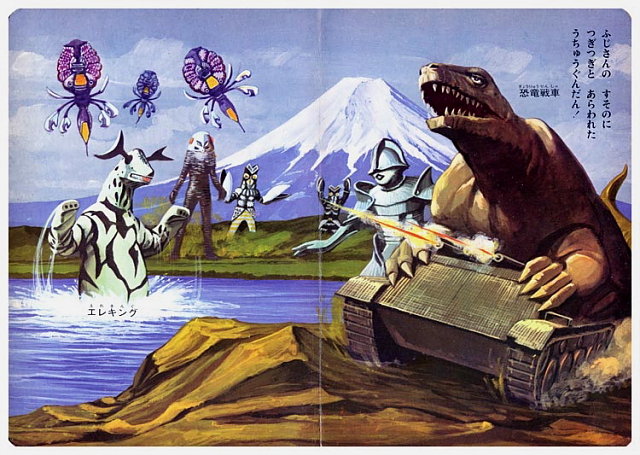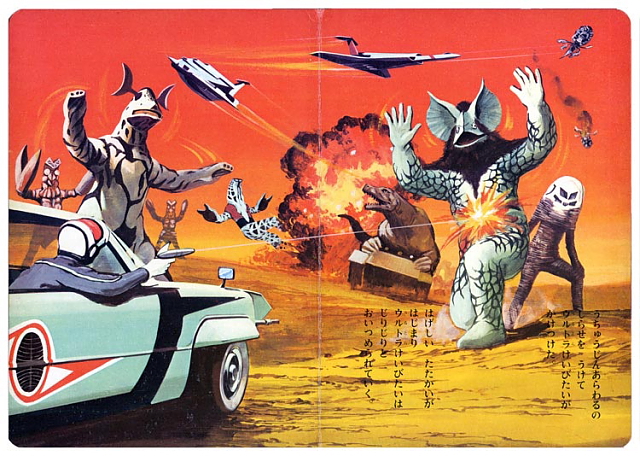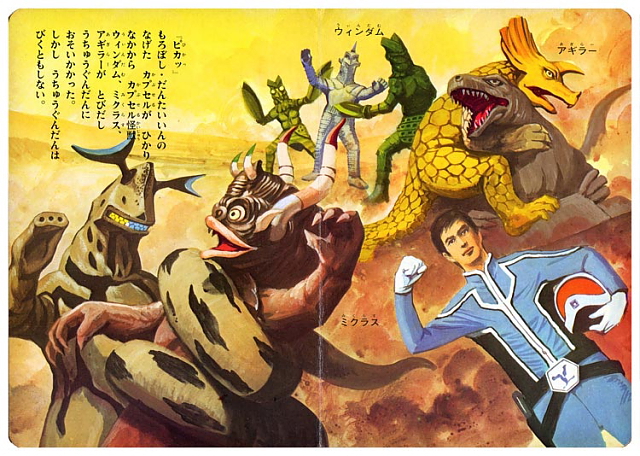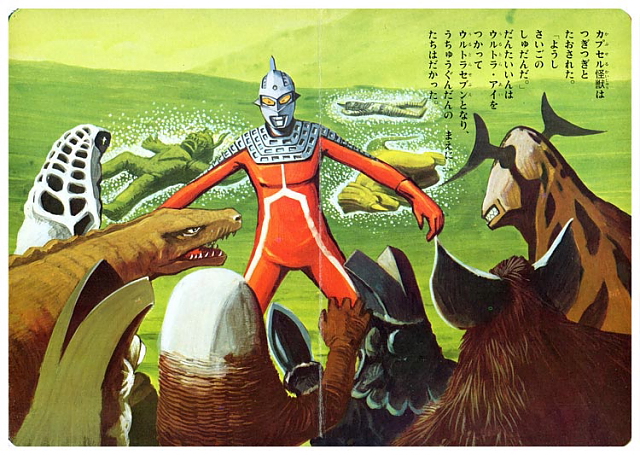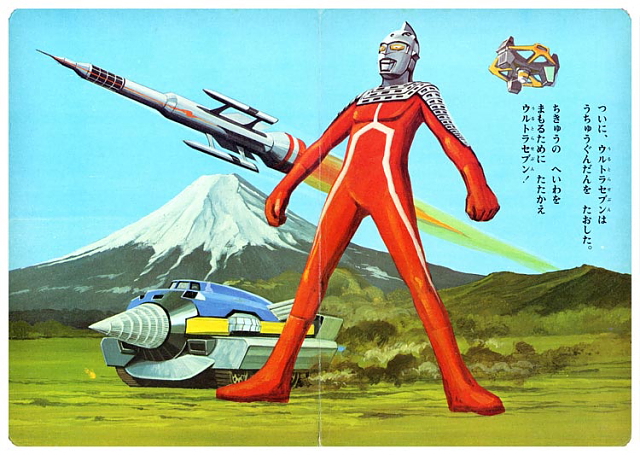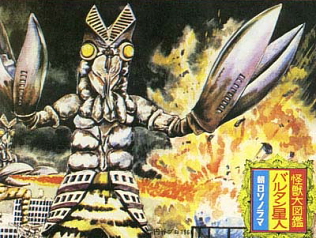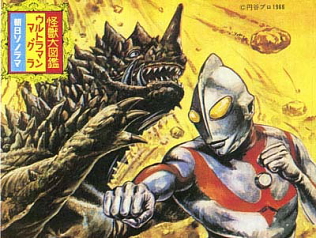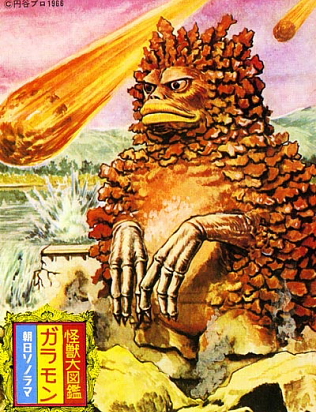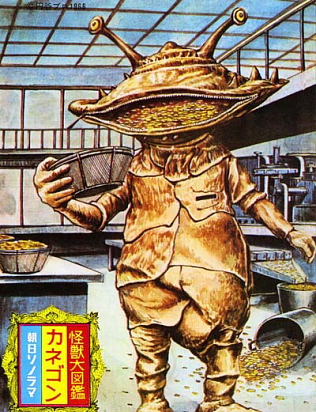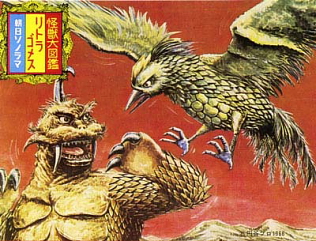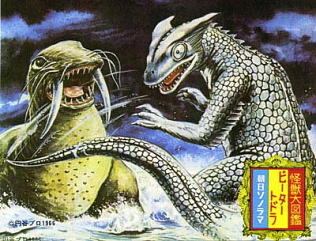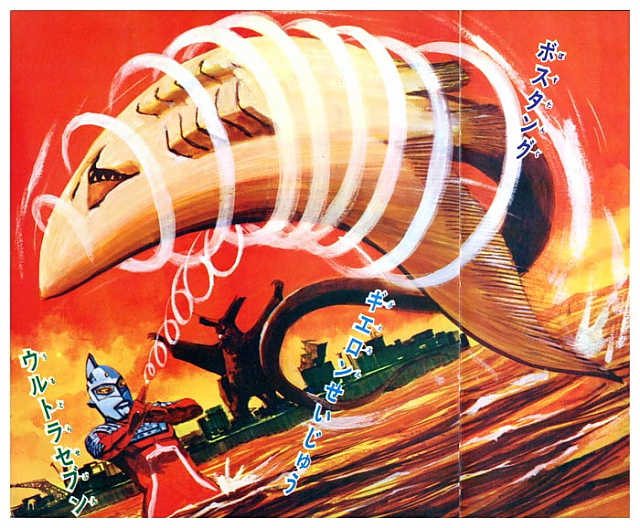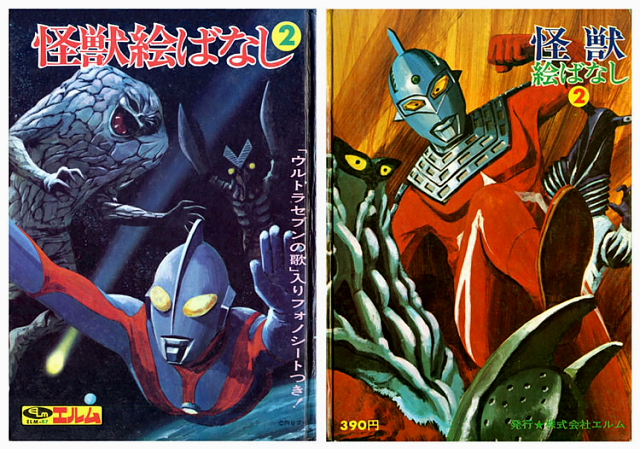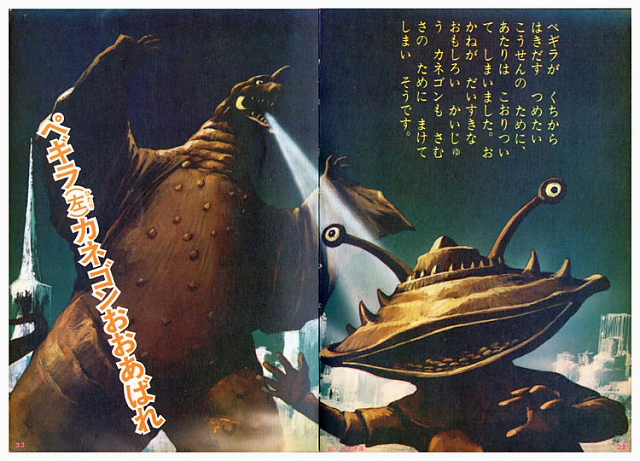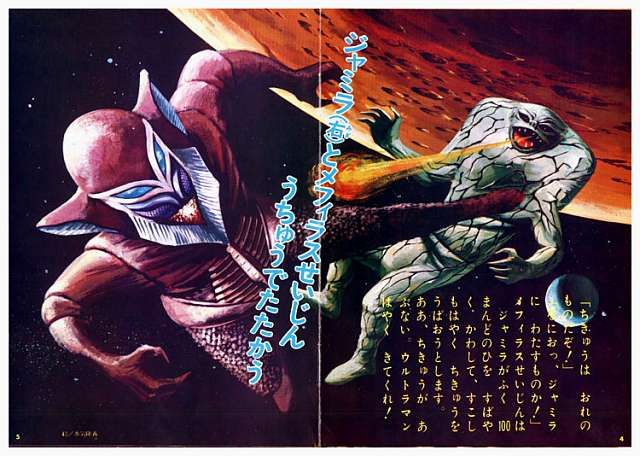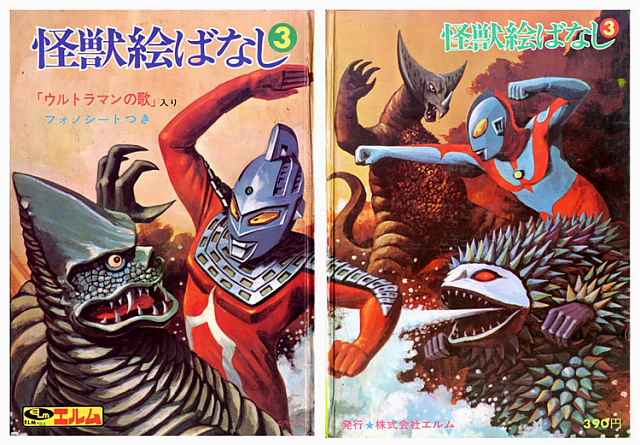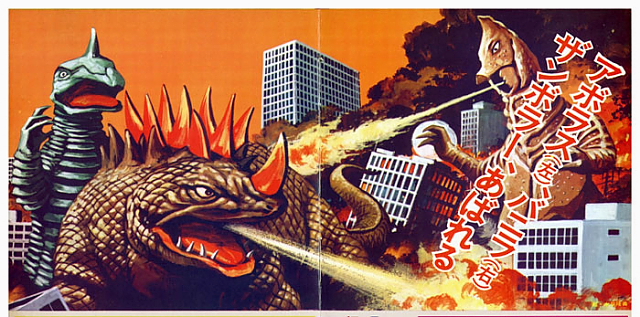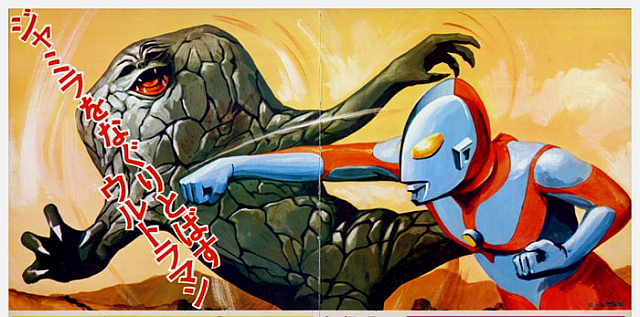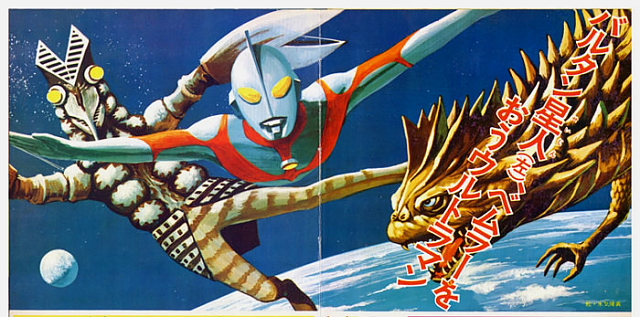Here is a collection of 50 Japanese town logos that incorporate stylized kanji characters into the design.
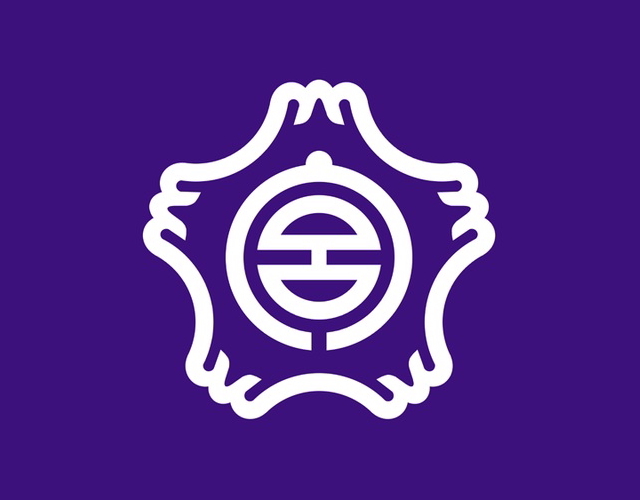
Fujinomiya (Shizuoka): The kanji 宮 (miya) inside a cherry blossom with Mt Fuji petals
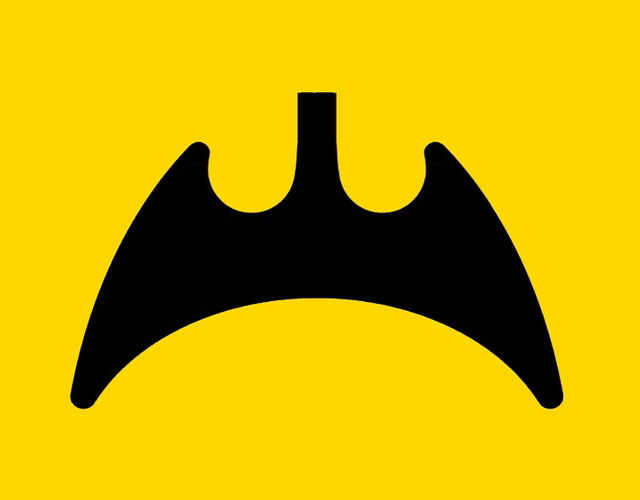
Fukuyama (Hiroshima): Bat-shaped 山 (yama) denotes old name of Kōmoriyama ("Bat Mountain")
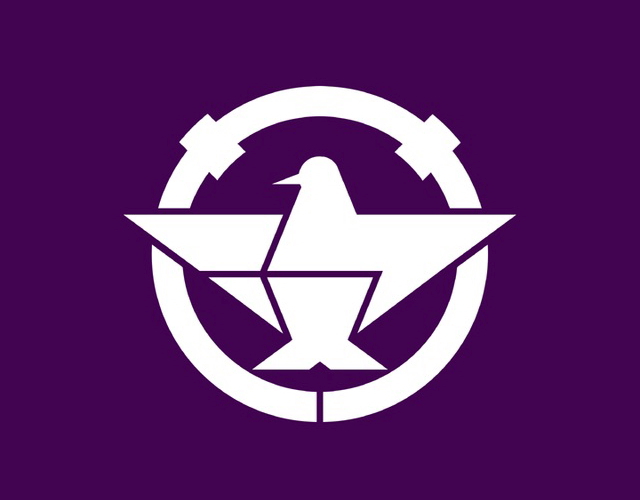
Ibaraki (Ōsaka): The kanji 茨 (ibara) in the shape of a pigeon
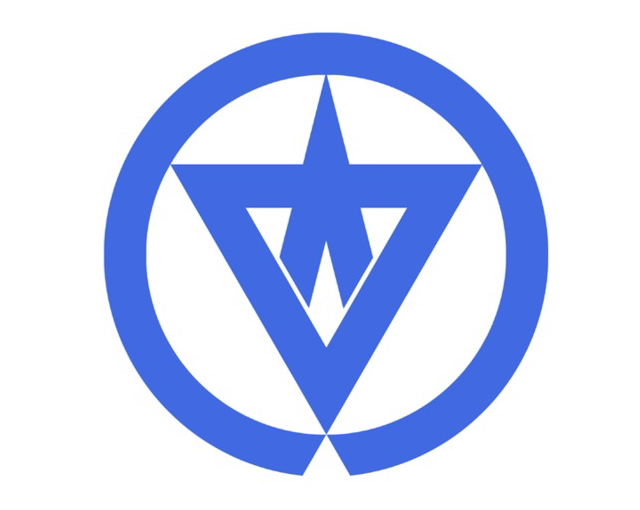
Nishino-omote (Kagoshima): The kanji 西 (nishi)
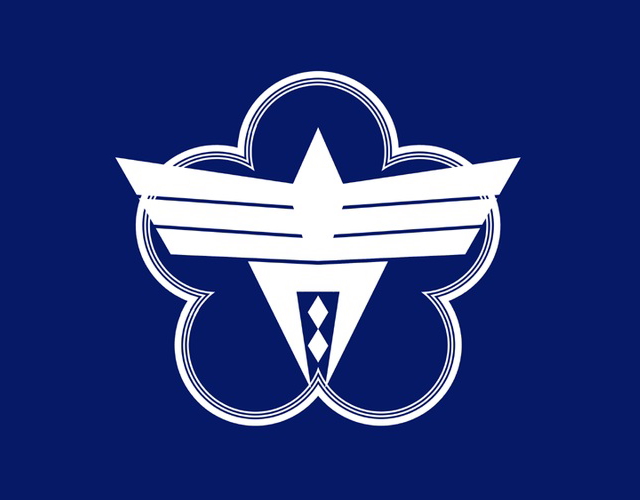
Ōme (Tōkyō): The kanji 青 (ao) and plum blossom (ume) signify 青梅 (Ōme)
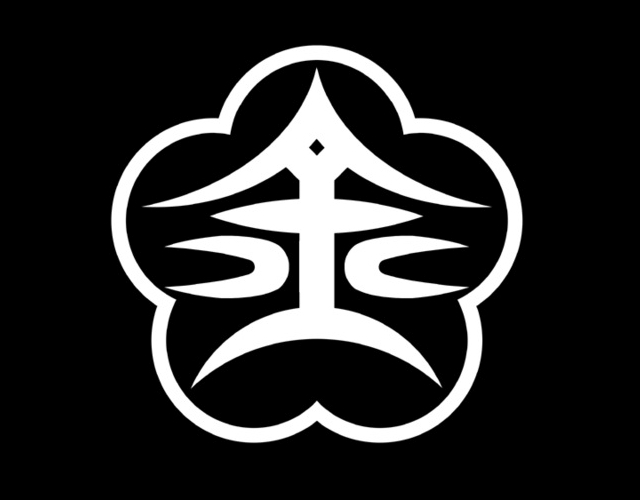
Kanazawa (Ishikawa): The kanji 金 (kana) inside a plum blossom, the Maeda clan symbol
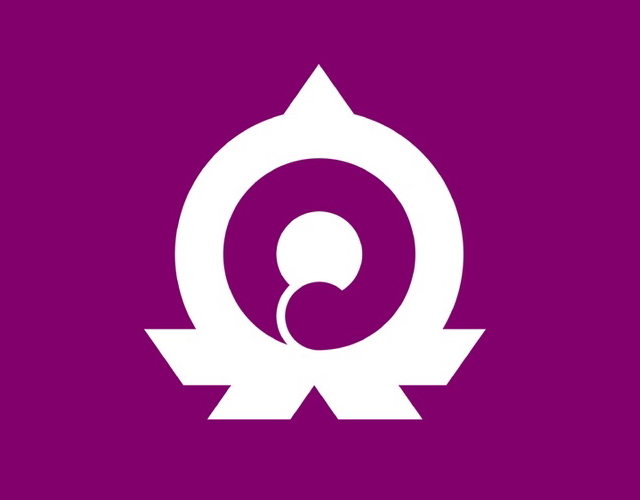
Okutama (Tōkyō): The kanji 奥 (oku)
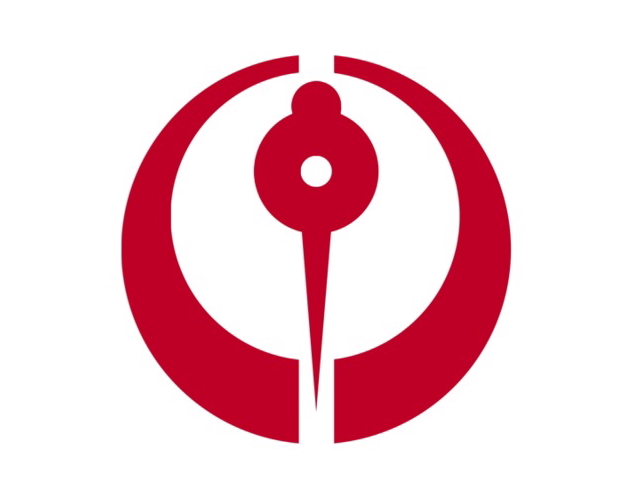
Hachinohe (Aomori): The kanji 八戸 (Hachinohe) in the shape of a crane (head and wings)
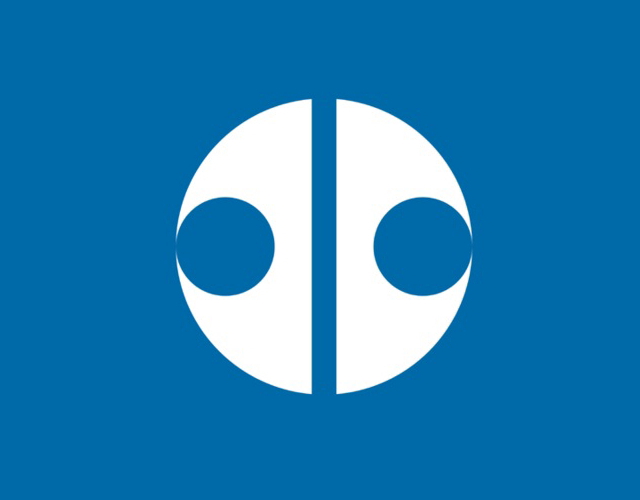
Kitami (Hokkaidō): The kanji 北 (kita) shaped like a sash weight
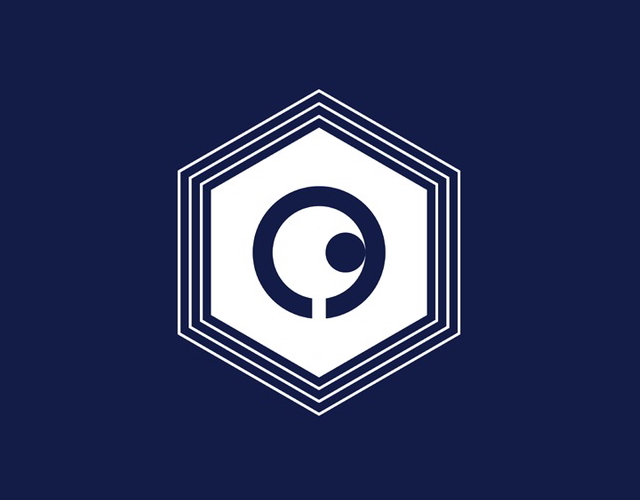
Yūbari (Hokkaidō): The kanji 夕 (yū) inside a hexagon representing coal
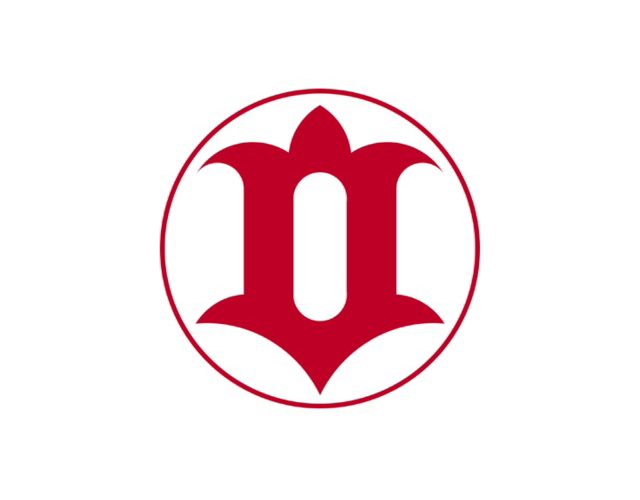
Hitachi (Ibaraki): A flower-shaped 立 (tachi) kanji inside a circle representing the kanji 日 (hi)
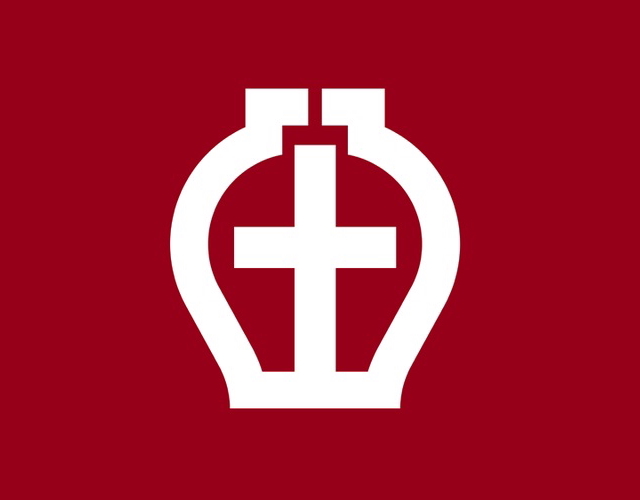
Seto (Aichi): The kanji 土 (tsuchi, or "soil") in a clay pot represents the local pottery industry
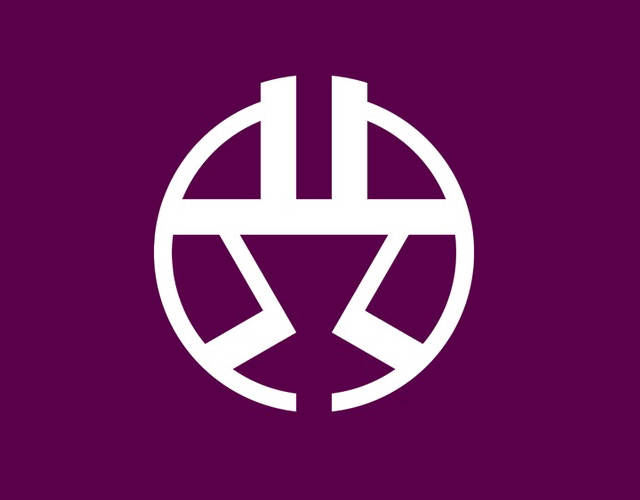
Shibuya (Tōkyō): The kanji 渋 (shibu)
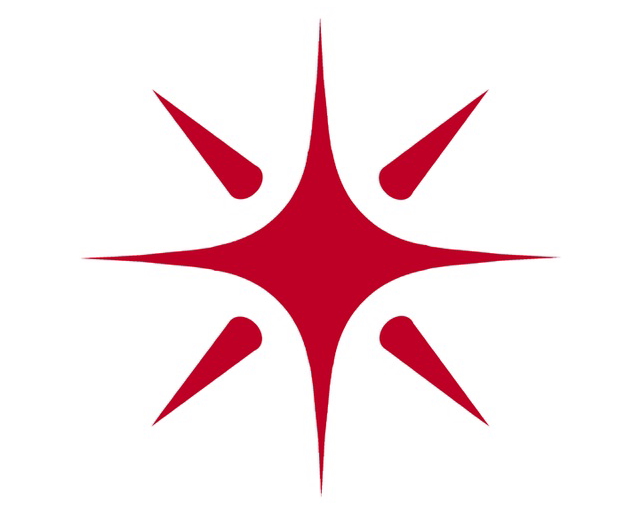
Yonago (Tottori): The kanji 米 (yona)
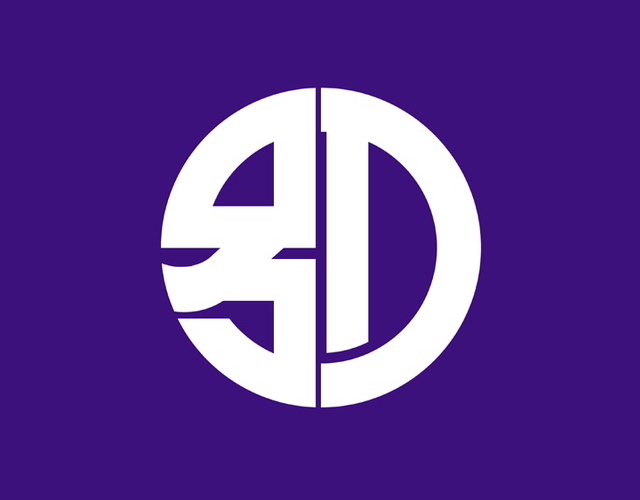
Beppu (Ōita): The kanji 別 (betsu), the first character in 別府 (Beppu)
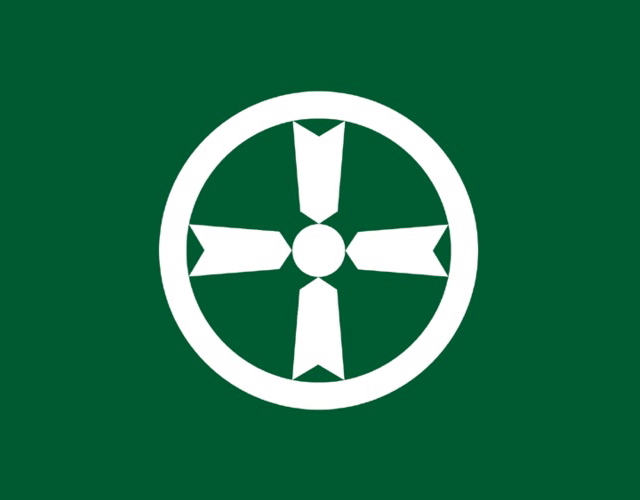
Akita: The kanji 田 (ta) symbolizing arrows, a reference to Akita Castle
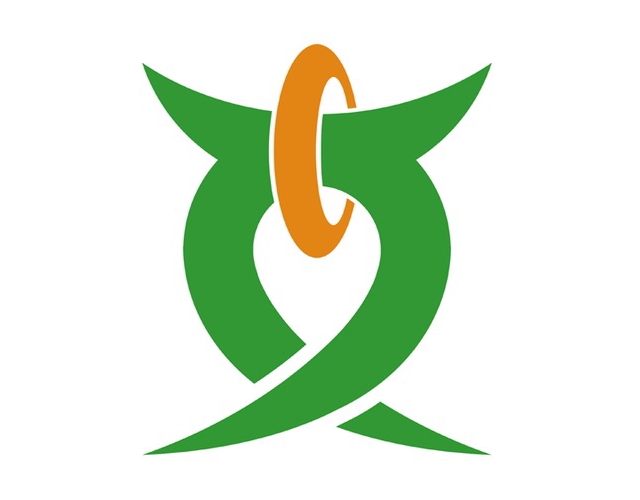
Azumino (Nagano): The kanji 安 (an), the first character in 安曇野 (Azumino)
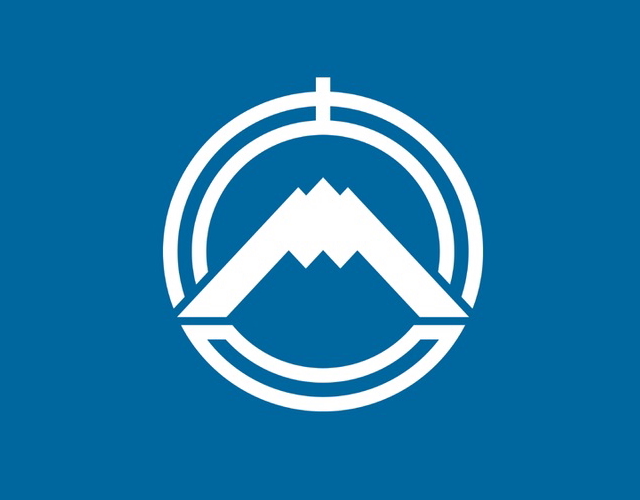
Fujiyoshida (Yamanashi): Mt Fuji and the kanji 吉 (yoshi)
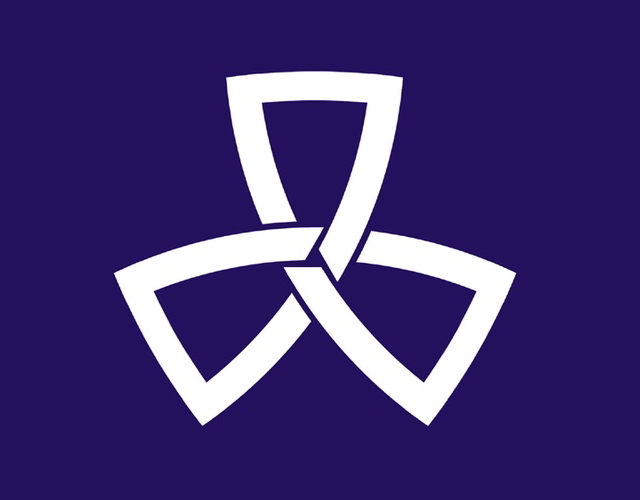
Shinagawa (Tōkyō): The kanji 品 (shina)
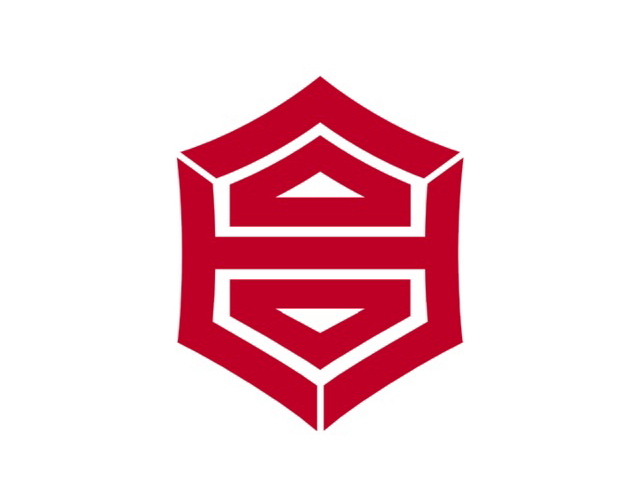
Kōchi (Kōchi): The kanji 高 (kō)
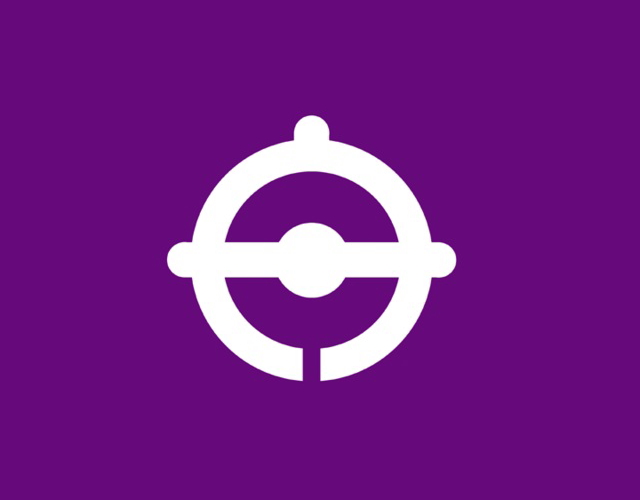
Funabashi (Chiba): The kanji 舟 (funa, or "boat")
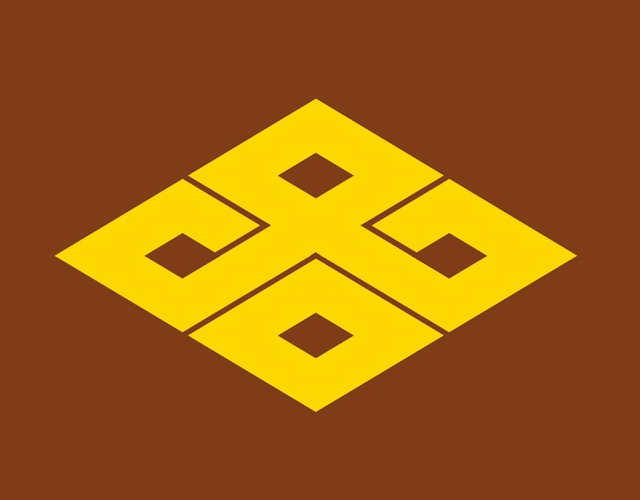
Kakamigahara (Gifu): The kanji 各 (kaku), the first character in 各務原 (Kakamigahara)
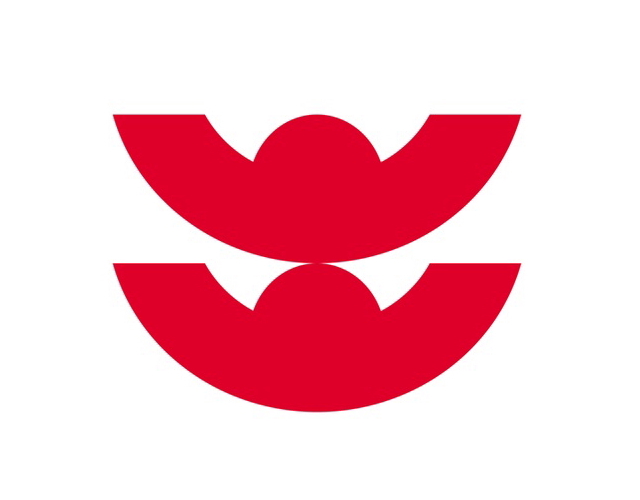
Izumo (Shimane): The kanji 出 (i)
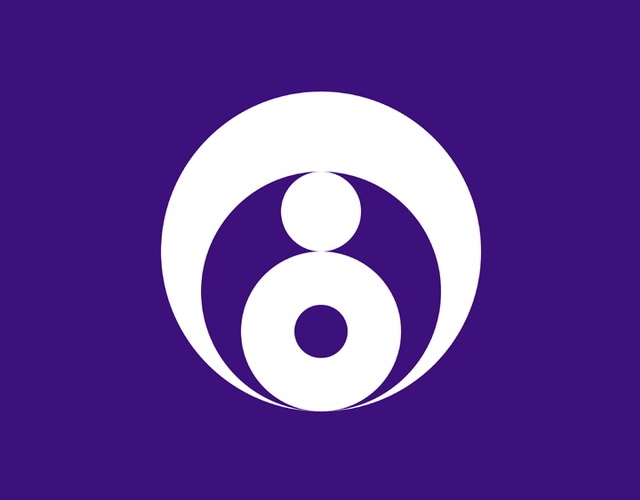
Ishinomaki (Miyagi): The kanji 石 (ishi)
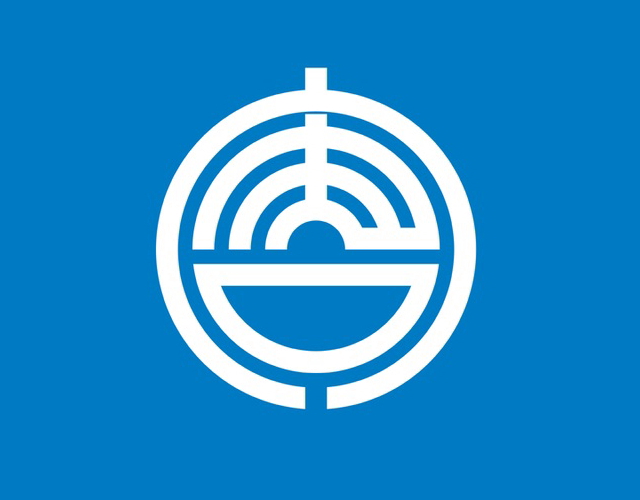
Karatsu (Saga): The kanji 唐 (kara)
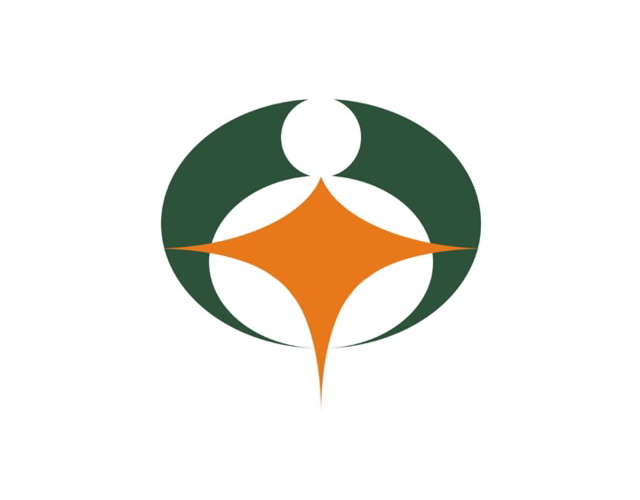
Kōka (Shiga): The kanji 甲 (kō)
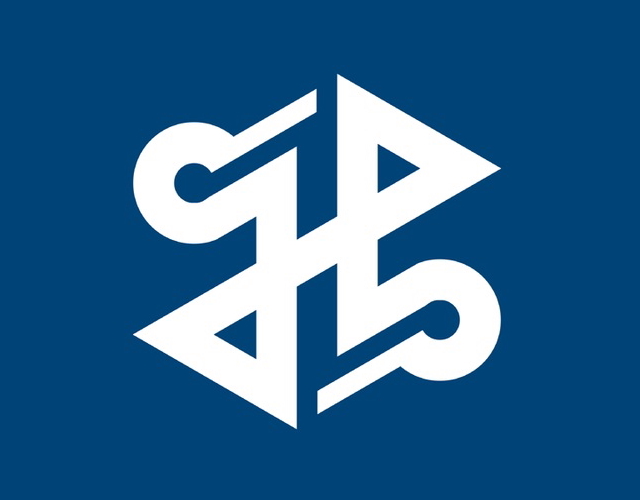
Shinjuku (Tōkyō): The kanji 新 (shin)

Uji (Kyōto): The kanji 宇 (u)
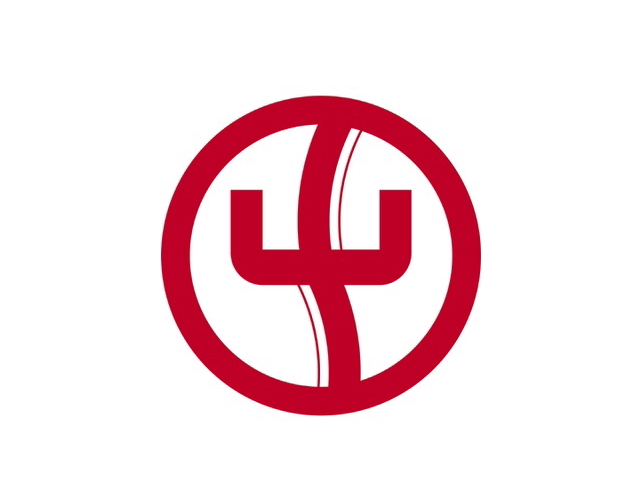
Nagareyama (Chiba): Seal script style kanji 流 (nagare), representing the Edogawa River

Nabari (Mie): The kanji 名 (na)
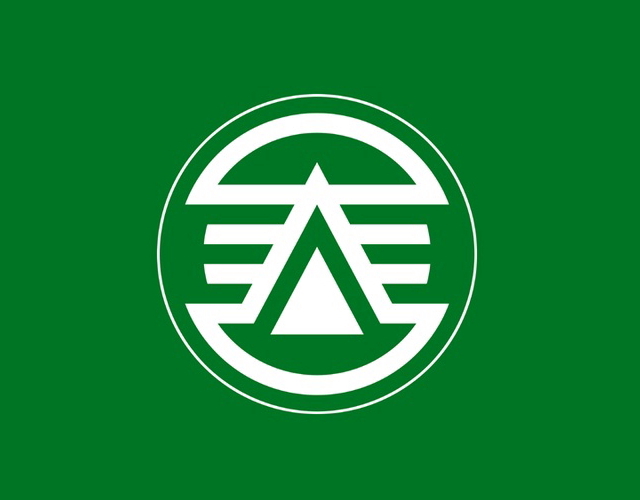
Kasuga (Fukuoka): 春 (haru), the first character in 春日 (Kasuga), shaped like local ancient tombs
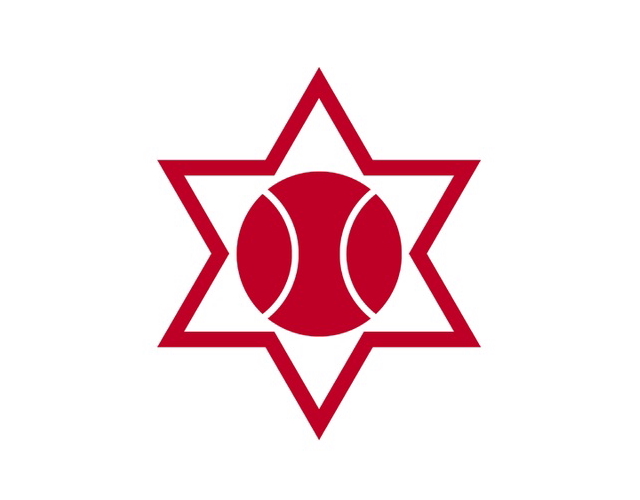
Otaru (Hokkaidō): The kanji 小 (o) inside a six-pointed star symbolizing snow

Matsumoto (Nagano): Pine (matsu) needles encircle the kanji 本 (moto)
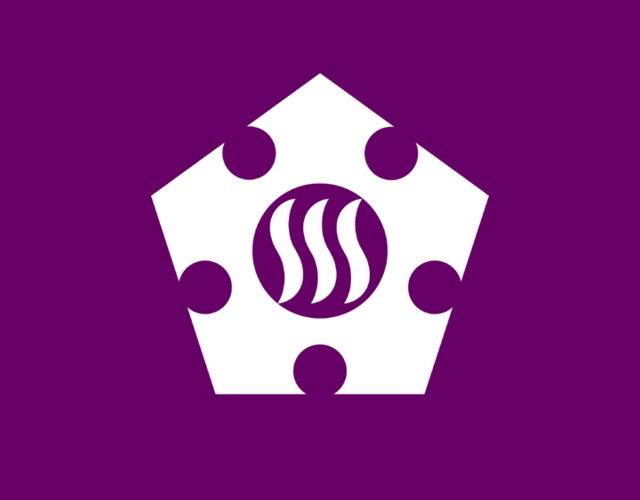
Tachikawa (Tōkyō): The kanji 立 (tachi) and 川 (kawa)
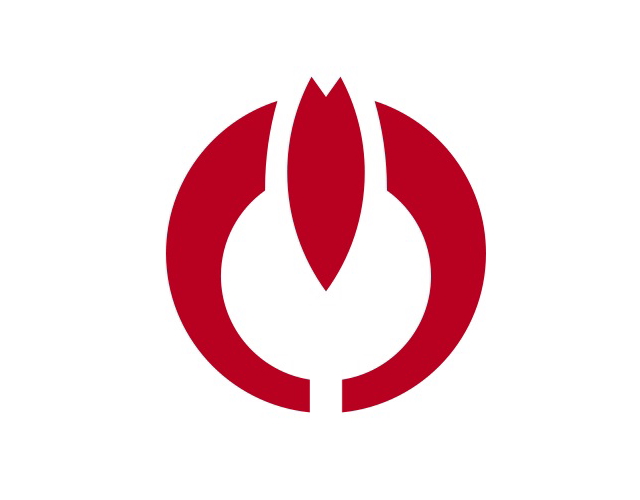
Koganei (Tōkyō): The kanji 小 (ko) shaped like a cherry blossom
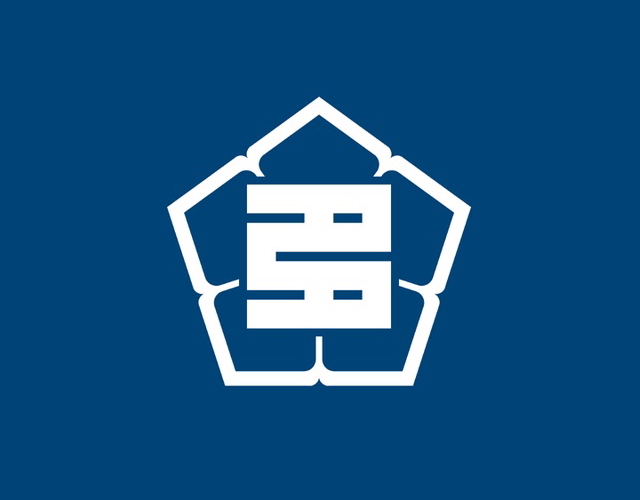
Tajimi (Gifu): The kanji 多 (ta) and a Chinese bellflower
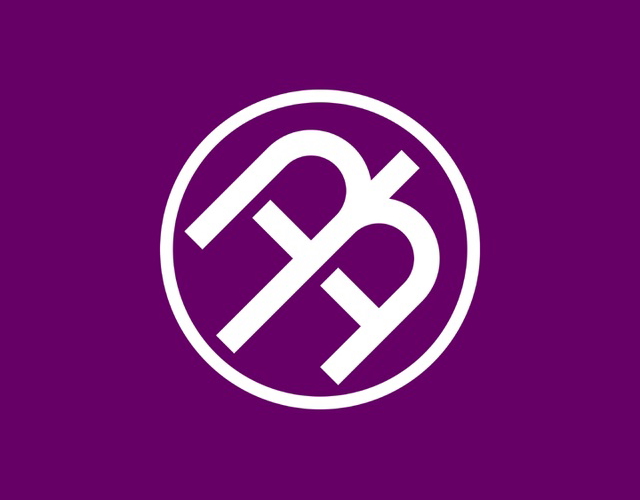
Tama (Tōkyō): The kanji 多 (ta) shaped like a pigeon
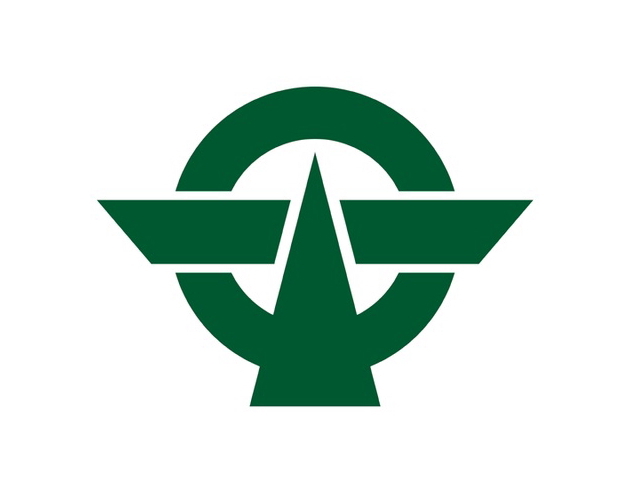
Kodaira (Tōkyō): The kanji 小平 (Kodaira)
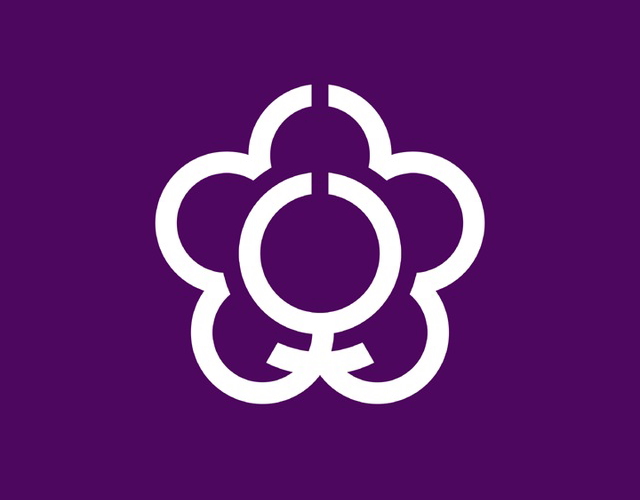
Tenri (Nara): The plum blossom-shaped 天 (ten) is similar to the symbol of the Tenrikyo religion
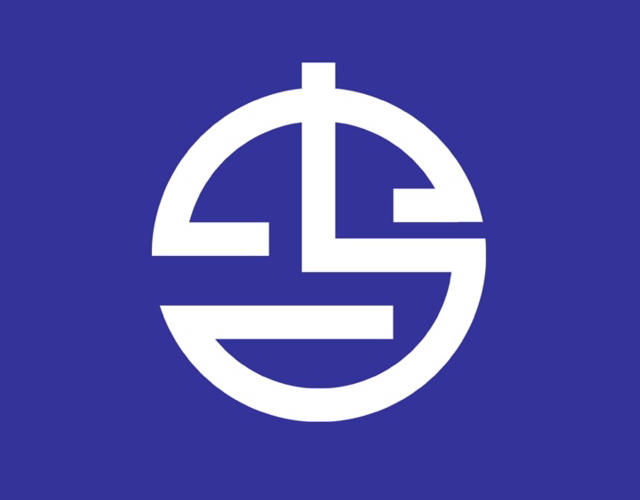
Yonaguni (Okinawa): The kanji 与 (yo)
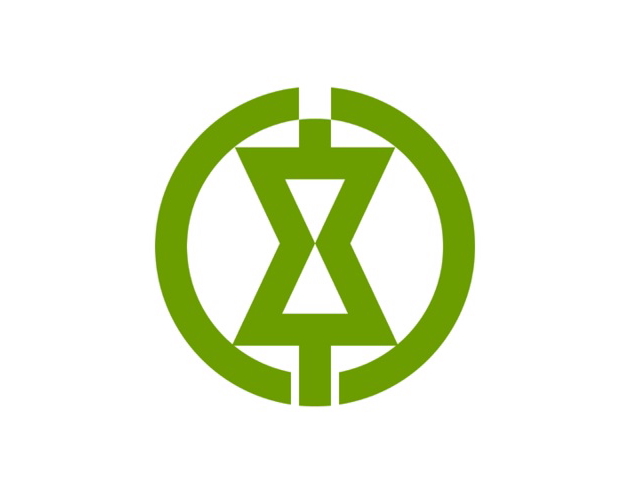
Monbetsu (Hokkaidō): The kanji 紋 (mon)
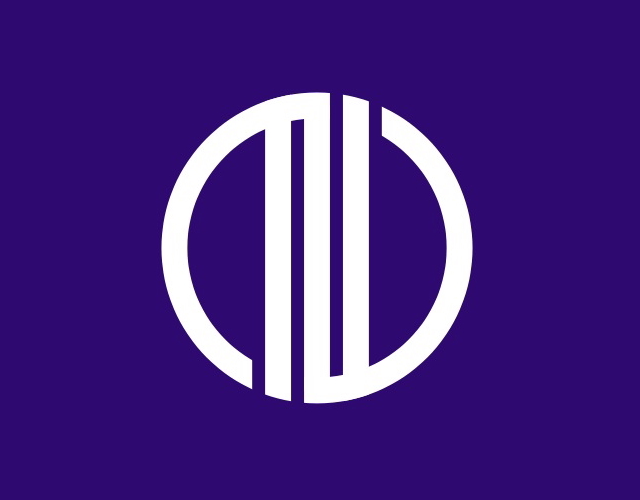
Sendai (Miyagi): The kanji 仙 (sen)
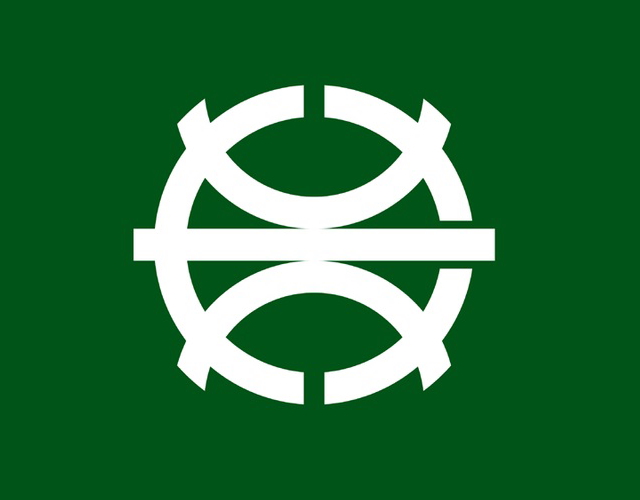
Suzuka (Mie): The kanji 鈴 (suzu) shaped like a bell
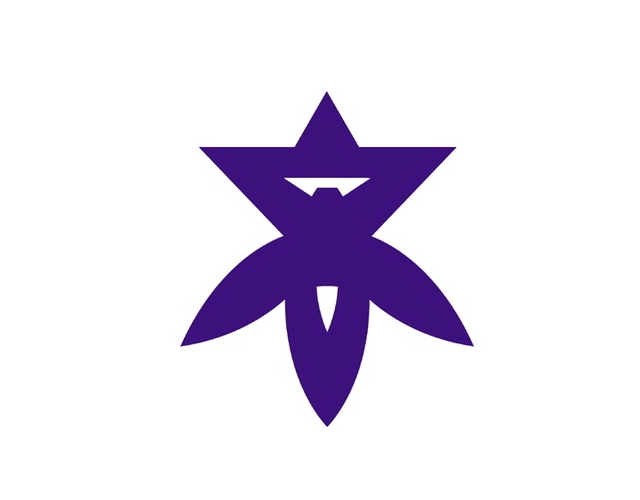
Takatsuki (Ōsaka): The kanji 高 (taka)
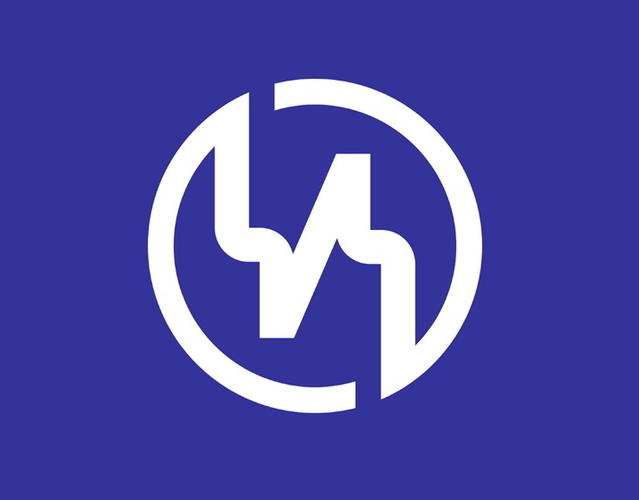
Taketomi (Okinawa): The kanji 竹 (take)
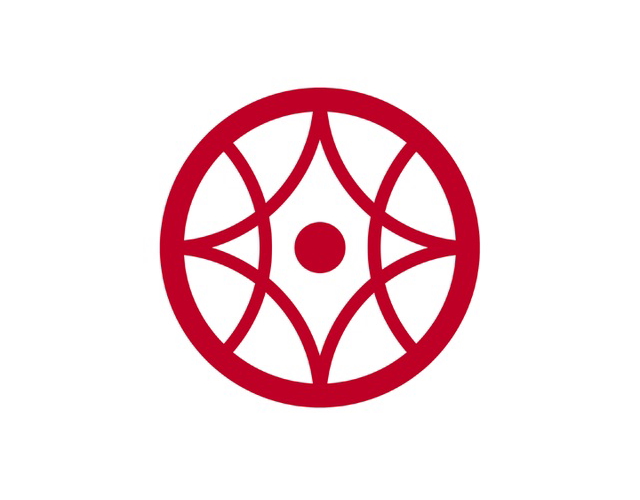
Yokkaichi (Mie): The kanji 四日 (yokka)
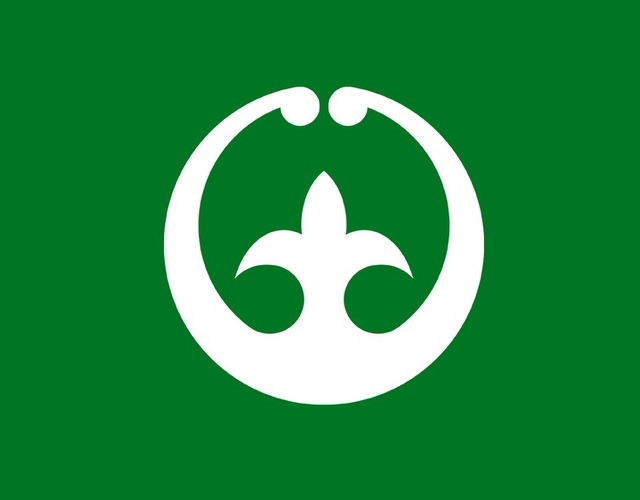
Tsuchiura (Ibaraki): The kanji 土 (tsuchi) represents a flower and the waves on Lake Kasumigaura

Utsunomiya (Tochigi): The kanji 宮 (miya) looks like a turtle shell, a reference to Utsunomiya Castle
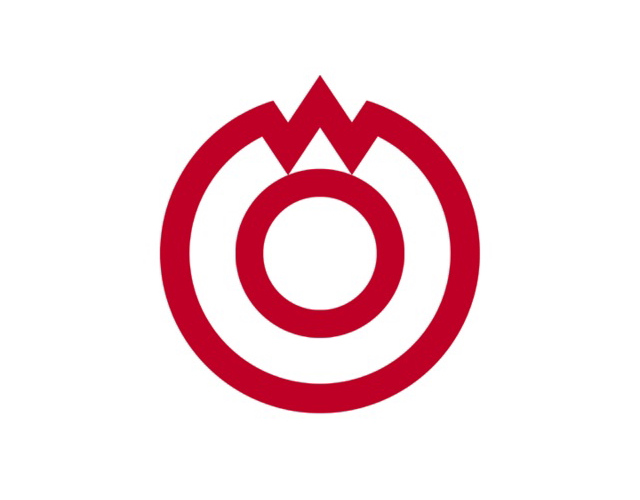
Yamaguchi (Yamaguchi): The kanji 山口 (Yamaguchi)
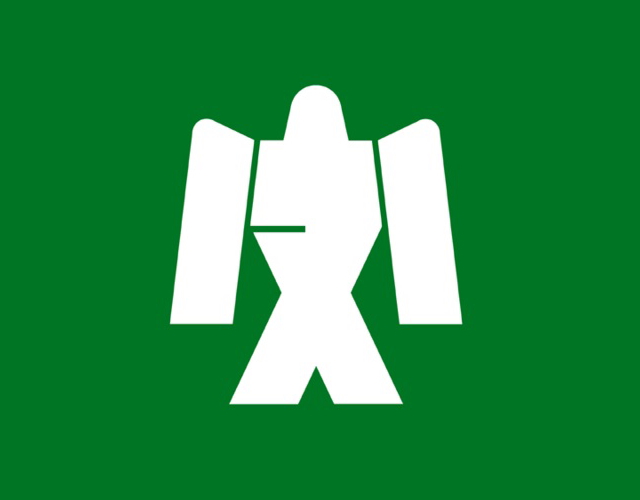
Hachijō (Tōkyō): The kanji 八丈 (Hachijō) arranged in the shape of a bird
Related: Hiragana/katakana town logos
[Link: Wikipedia]

